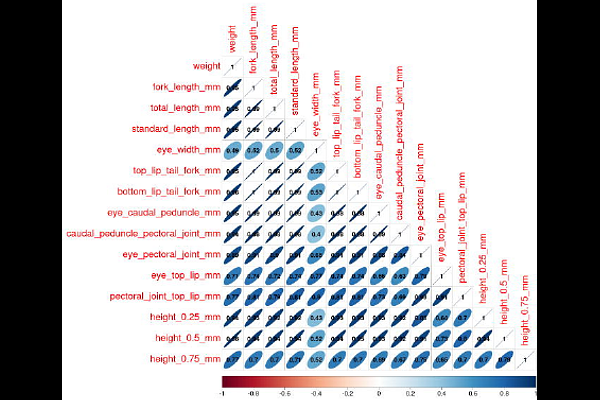Integrating genomics, machine learning, and computer vision to understand growth traits in selectively bred snapper (Chrysophrys auratus)

Integrating genomics, machine learning, and computer vision to understand growth traits in selectively bred snapper (Chrysophrys auratus)
Blommaert, J.; Bayer, P. E.; Ashton, D. T.; Samuels, G.; Jesson, L.; Wellenreuther, M.
AbstractBackground: Understanding the genetic basis of growth-related traits is essential for optimising selective breeding programmes in aquaculture species. In this study, we analysed phenotypic and genomic data from a selectively bred population of snapper (Chrysophrys auratus) to identify genetic variants associated with key growth traits. We used a high-throughput, image-based phenotyping pipeline to extract 13 measurements rapidly and with minimal impact on the fish. These phenotypic measurements, together with manually measured weight and fork length, were analysed for correlations and principal component structure. Additionally, heritabilities were estimated for each trait. Then, genome-wide association studies (GWAS) were performed to identify growth-associated SNPs. To trial genomic prediction, we implemented machine learning (ML) models in XGBoost trained on SNP genotypes, with relatedness-based clustering used to minimise data leakage. Results: Via GWAS, we identifying 24 SNPs significantly associated with growth traits, with several mapping to genes involved in metabolic and developmental pathways. Despite the high-dimensionality of these data, the ML approach still achieved moderate levels of predictability. The top ML growth SNPs showed some congruency with the GWAS growth SNPs, and 75 % of the GWAS SNPs were used by the ML model to predict weight. Functional annotation identified putative gene-level effects, providing insights into potential biological mechanisms underlying growth variation. Conclusions: Our findings contribute to the development of genomic selection tools for snapper breeding and highlight the utility of integrating computer vision-based phenotyping with GWAS and ML for trait prediction in aquaculture species.